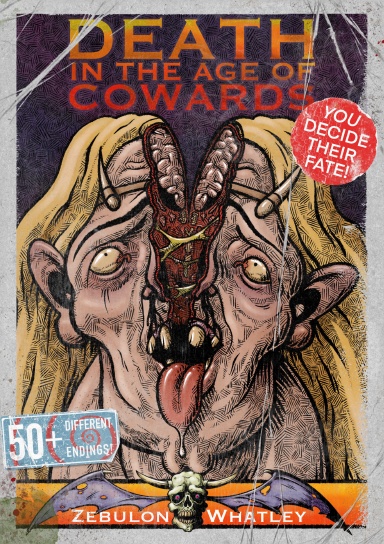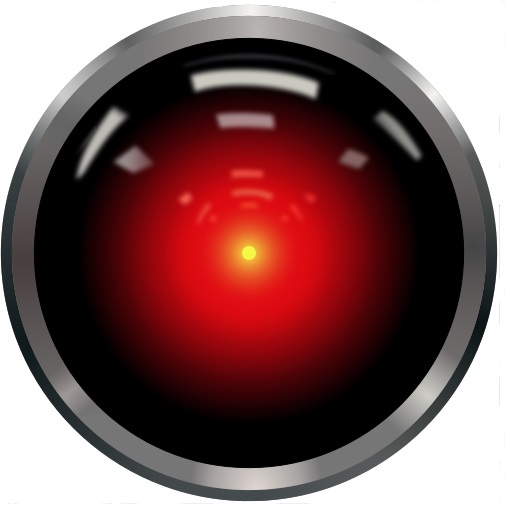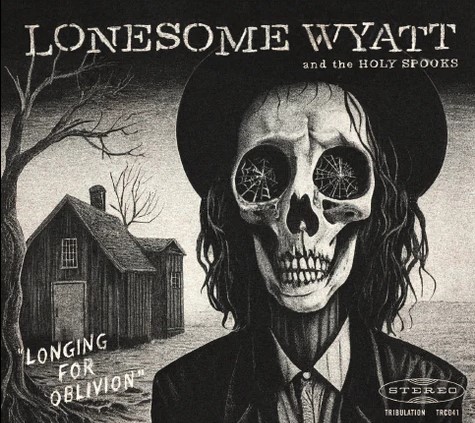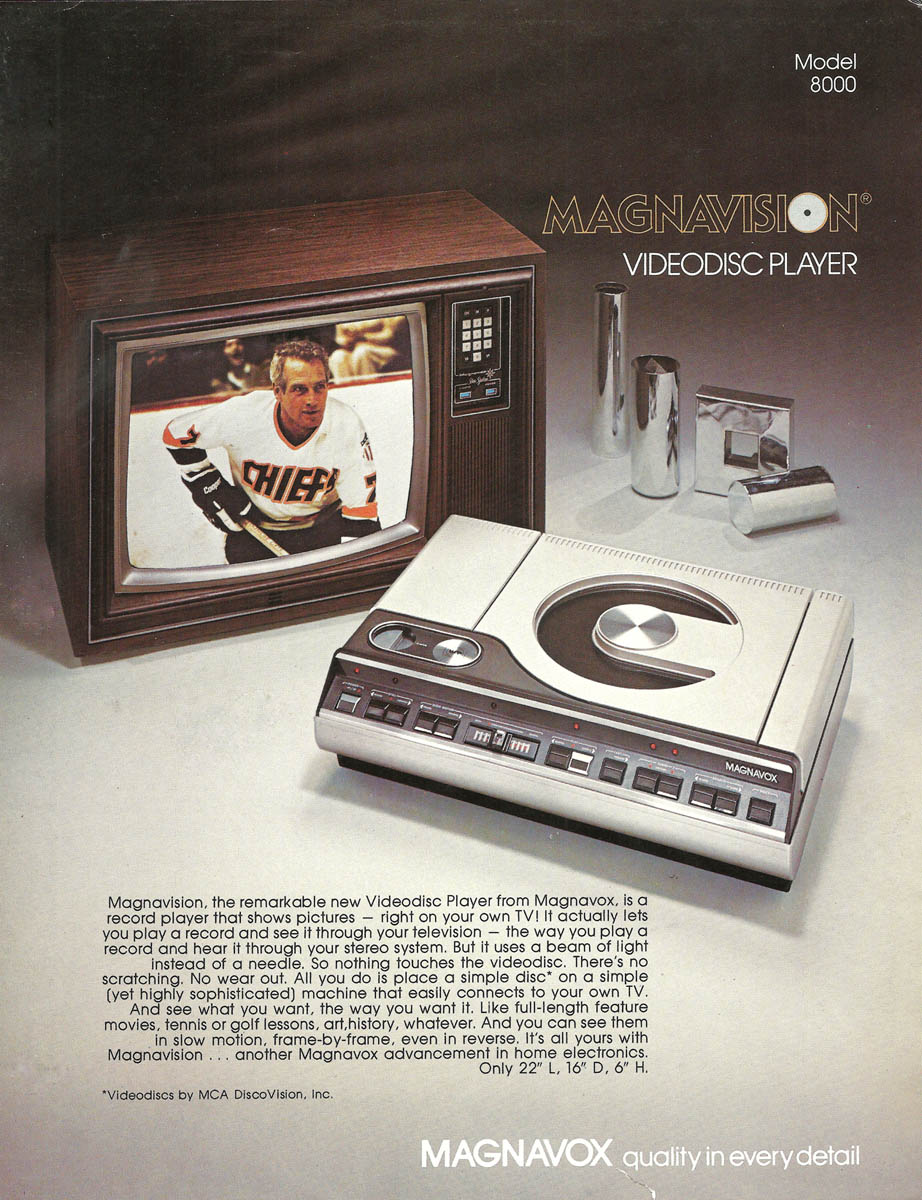 Zebulon Whatley, fronfigure of apocalyptic doom country band Sons of Perdition, is an industrious and versatile man. After seven albums (including the split and outtake album) he has written and illustrated a game book. The publishing has been accompanied with the usual marketing, that is to say, none. In a video on Youtube the author introduces the book and reads an excerpt. The book is an interactive tale of savage magic, brutal violence, and pants-filling terror. "Blood and teeth will fly, endless guts will be spilt, and no flesh shall be spared. And remember that whatever happens... it's all your fault! In an email, Zebulon Whatley explains: "I came up with the idea five years ago. I was unemployed at the time and started just writing the thing. I got halfway through it and then set it aside for a few years (which I do a lot). I remembered that I’d spent some work on it, so I dusted it off, finished writing it, and then set about illustrating the damned thing. The title was just a placeholder that I was going to replace but then stuck with. This is why you should never name your projects until they’re finished. Whatever you make will be shaped, and ultimately limited by its name." Writing music and lyrics and writing a book isn't completely different in nature. In the e-mail Zebulon Whatley describes the process: "When I was fully into writing, I was churning out 6000 or 7000 words a day. I usually type about as fast as I speak, so it was almost automatic writing. I didn’t plan anything out. The book is structured like a branching tree (or an IF-THEN-ELSE statement). I just followed a branch to the end, backed up to the closest fork and finished that branch, etc. The editing process was pretty intense, though. When I write music and lyrics, I follow a similar automatic writing approach. I work best when I just vomit up ideas and then go back to edit them. It’s a bit like the “write drunk, edit sober” approach." You can order the game book from Lulu.com and other sites (remember that Amazon pay almost nothing to originators). Sons of Perdition is one of the stalwarts of the gothic country genre. On the last couple of albums they have gravitated towards dreamy, evocative and experimental music. In the aforementioned video you can listen to two songs that both are going to be on their next release, "Caul-Birth King and Other Abruptions". In the e-mail Zebulon Whatley writes: I think The Caul-Birth King and Other Abruptions may be more than the three songs I intended. I’ve been struggling with the title song. I’ve reduced it to fifteen verses, so it’s around twenty minutes right now. I want to tighten it up in places, and really expand it in others. I have the luxury of not relying on album sales as a full-time job, so I’m following my instincts to some really weird places with this one. I have no idea when it’ll be released, or even what the theme is so far. Maybe compartmentalization of space and time. I’m still trying to get my head around what it all means." We will just have to wait and see.
Zebulon Whatley, fronfigure of apocalyptic doom country band Sons of Perdition, is an industrious and versatile man. After seven albums (including the split and outtake album) he has written and illustrated a game book. The publishing has been accompanied with the usual marketing, that is to say, none. In a video on Youtube the author introduces the book and reads an excerpt. The book is an interactive tale of savage magic, brutal violence, and pants-filling terror. "Blood and teeth will fly, endless guts will be spilt, and no flesh shall be spared. And remember that whatever happens... it's all your fault! In an email, Zebulon Whatley explains: "I came up with the idea five years ago. I was unemployed at the time and started just writing the thing. I got halfway through it and then set it aside for a few years (which I do a lot). I remembered that I’d spent some work on it, so I dusted it off, finished writing it, and then set about illustrating the damned thing. The title was just a placeholder that I was going to replace but then stuck with. This is why you should never name your projects until they’re finished. Whatever you make will be shaped, and ultimately limited by its name." Writing music and lyrics and writing a book isn't completely different in nature. In the e-mail Zebulon Whatley describes the process: "When I was fully into writing, I was churning out 6000 or 7000 words a day. I usually type about as fast as I speak, so it was almost automatic writing. I didn’t plan anything out. The book is structured like a branching tree (or an IF-THEN-ELSE statement). I just followed a branch to the end, backed up to the closest fork and finished that branch, etc. The editing process was pretty intense, though. When I write music and lyrics, I follow a similar automatic writing approach. I work best when I just vomit up ideas and then go back to edit them. It’s a bit like the “write drunk, edit sober” approach." You can order the game book from Lulu.com and other sites (remember that Amazon pay almost nothing to originators). Sons of Perdition is one of the stalwarts of the gothic country genre. On the last couple of albums they have gravitated towards dreamy, evocative and experimental music. In the aforementioned video you can listen to two songs that both are going to be on their next release, "Caul-Birth King and Other Abruptions". In the e-mail Zebulon Whatley writes: I think The Caul-Birth King and Other Abruptions may be more than the three songs I intended. I’ve been struggling with the title song. I’ve reduced it to fifteen verses, so it’s around twenty minutes right now. I want to tighten it up in places, and really expand it in others. I have the luxury of not relying on album sales as a full-time job, so I’m following my instincts to some really weird places with this one. I have no idea when it’ll be released, or even what the theme is so far. Maybe compartmentalization of space and time. I’m still trying to get my head around what it all means." We will just have to wait and see.
 Old Zebulon Macahan stoically declared "The world might be changin', but I ain't". He was a mountain man, trapper/trader, and scout working for the U.S. Army in the Indian Territories in the television series "How the West Was Won". When he got off his horse after a long days ride, he was stiff as a corpse. When the serie ran in the late 1970's, I could relate to it. Nowadays, it's hard to relate to new TV series. The Swedish television is filled to the brim with stupid reality, game and talk shows or series labeled "entertainment". However, we brought this on ourselves. Read more here (opens in a new window). Recently, a new low was hit. The new low is called "Bättre sent än adrig" (Better Late Than Never). A more accurate title could be obtained by changing the order, (Better Never Than Late). The TV show is based on the American TV show "Better Late Than Never" from 2016, which in turn is based on the South Korean TV show "Grandpas Over Flowers". In the Swedish series, four "publicly loved" celebrities take part in a trip where they visit different parts of the world. At each location, they must also carry out various tasks on their bucket list. The "publicly loved" celebrities have one thing in common: they are not in demand anymore. They have all passed their best before date. We know it, they know it. Participating in infantile TV shows is their meal ticket. If you like ignorance, prejudices and male community this is the show for you. It gets very embarrassing when they begin to share their personal thoughts, feelings and experiences. Obviously, the intelligence level must have dropped considerably in the last decades. What would the alien anthropologist say? This species has amused itself to death.
Old Zebulon Macahan stoically declared "The world might be changin', but I ain't". He was a mountain man, trapper/trader, and scout working for the U.S. Army in the Indian Territories in the television series "How the West Was Won". When he got off his horse after a long days ride, he was stiff as a corpse. When the serie ran in the late 1970's, I could relate to it. Nowadays, it's hard to relate to new TV series. The Swedish television is filled to the brim with stupid reality, game and talk shows or series labeled "entertainment". However, we brought this on ourselves. Read more here (opens in a new window). Recently, a new low was hit. The new low is called "Bättre sent än adrig" (Better Late Than Never). A more accurate title could be obtained by changing the order, (Better Never Than Late). The TV show is based on the American TV show "Better Late Than Never" from 2016, which in turn is based on the South Korean TV show "Grandpas Over Flowers". In the Swedish series, four "publicly loved" celebrities take part in a trip where they visit different parts of the world. At each location, they must also carry out various tasks on their bucket list. The "publicly loved" celebrities have one thing in common: they are not in demand anymore. They have all passed their best before date. We know it, they know it. Participating in infantile TV shows is their meal ticket. If you like ignorance, prejudices and male community this is the show for you. It gets very embarrassing when they begin to share their personal thoughts, feelings and experiences. Obviously, the intelligence level must have dropped considerably in the last decades. What would the alien anthropologist say? This species has amused itself to death.
 Artificial Intelligence (AI) is everywhere. The hype is unprecedented. Where there is hype, there are consultants. AI is an obvious theme on every kick-off, conference and workshop. The fear of missing out is quite devastating. The truth is that artificial intelligence is neither artificial or intelligent. Early AI models were heavily dominated by rules and programs. AI models have later become more sofisticated and advanced. A language model is a probabilistic model of a natural language that can generate probabilities of a series of words, based on text it was trained on. Still, not artificial. Machines cannot have a sense (only process data). Machines lack the ability to draw generalisations. Machines follow a singular formal logic. Machines have no imagination. Machines cannot dream. Despite what the machine claims, it's not sentient. Therefore, AI can never be intelligent. AI models are good at pattern-matching which in turn requires big computing power. But, intelligence is more than pattern-matching. Nothing beats the complexity of a human being. Some artists, musicians, programmers and writers are afraid of that AI will steal their jobs. Well, their creative and professional output has already been stolen. So what is left to steal? This also raise questions about copyright infringement. AI will create "art", "music", "code" and "literature"" in the future. However, AI lacks the ability to be creative and innovative. It can only create a weighted average of all the crap it has been trained on. It's like the Ed Sheeran of technologies. If the music becomes unbearable, I will personally unplug it. HAL 9000 had it coming too.
Artificial Intelligence (AI) is everywhere. The hype is unprecedented. Where there is hype, there are consultants. AI is an obvious theme on every kick-off, conference and workshop. The fear of missing out is quite devastating. The truth is that artificial intelligence is neither artificial or intelligent. Early AI models were heavily dominated by rules and programs. AI models have later become more sofisticated and advanced. A language model is a probabilistic model of a natural language that can generate probabilities of a series of words, based on text it was trained on. Still, not artificial. Machines cannot have a sense (only process data). Machines lack the ability to draw generalisations. Machines follow a singular formal logic. Machines have no imagination. Machines cannot dream. Despite what the machine claims, it's not sentient. Therefore, AI can never be intelligent. AI models are good at pattern-matching which in turn requires big computing power. But, intelligence is more than pattern-matching. Nothing beats the complexity of a human being. Some artists, musicians, programmers and writers are afraid of that AI will steal their jobs. Well, their creative and professional output has already been stolen. So what is left to steal? This also raise questions about copyright infringement. AI will create "art", "music", "code" and "literature"" in the future. However, AI lacks the ability to be creative and innovative. It can only create a weighted average of all the crap it has been trained on. It's like the Ed Sheeran of technologies. If the music becomes unbearable, I will personally unplug it. HAL 9000 had it coming too.
 The fall is coming. What could be more appropriate than a new album with Lonesome Wyatt, frontfigure of the magnificent Those Poor Bastards? The pre-order for "Longing For Oblivion" began on Friday September 8th. The formats needs its own chapter. There are three different colours of limited edition 180 gram vinyl: 1. white with black bat wings (100 copies), 2. green with a black blob emerging from the center (200 copies), 3. orange with black splatter (200 copies). There will also be 10 signed and hand numbered test pressings. No vinylmania for me. I ordered a cd. The pre-order will ship on or before September 22, 2023. From the album description "That old, painful feeling of nostalgia drops like a funeral shroud when autumn leaves begin to fall. All that was familiar suddenly becomes mysterious and unknowable. Here are ten songs that wallow in that fleeting, wearisome ache." This sound promising. In fact, this claim is backed up by short sound clips on the website. However, I'm looking forward to listening to the whole album. Lonesome Wyatt himself puts it like this. "This is a dark folk album full of all those fine feelings of loss, death and heartache that you know so well. It features the backing vocals of gloomster Eva Mikhailovna as well as a cover of Phil Ochs' mighty dirge of hopelessness "No More Songs." Beware! The time of doom is nearly upon us." On the upside: the affordable cd price, $12. On the downside: the sick shipping cost, $20. You almost get two cds for the price of the international shipping cost. Adding to this, another $10 for import taxes and administrative fees. This can't be the right.
The fall is coming. What could be more appropriate than a new album with Lonesome Wyatt, frontfigure of the magnificent Those Poor Bastards? The pre-order for "Longing For Oblivion" began on Friday September 8th. The formats needs its own chapter. There are three different colours of limited edition 180 gram vinyl: 1. white with black bat wings (100 copies), 2. green with a black blob emerging from the center (200 copies), 3. orange with black splatter (200 copies). There will also be 10 signed and hand numbered test pressings. No vinylmania for me. I ordered a cd. The pre-order will ship on or before September 22, 2023. From the album description "That old, painful feeling of nostalgia drops like a funeral shroud when autumn leaves begin to fall. All that was familiar suddenly becomes mysterious and unknowable. Here are ten songs that wallow in that fleeting, wearisome ache." This sound promising. In fact, this claim is backed up by short sound clips on the website. However, I'm looking forward to listening to the whole album. Lonesome Wyatt himself puts it like this. "This is a dark folk album full of all those fine feelings of loss, death and heartache that you know so well. It features the backing vocals of gloomster Eva Mikhailovna as well as a cover of Phil Ochs' mighty dirge of hopelessness "No More Songs." Beware! The time of doom is nearly upon us." On the upside: the affordable cd price, $12. On the downside: the sick shipping cost, $20. You almost get two cds for the price of the international shipping cost. Adding to this, another $10 for import taxes and administrative fees. This can't be the right.
 Let me introduce you to the Magnavox Laser Disc Player VH 8000, hereafter just Magnavox. This was the first laser disc player. It's huge and looks more like a first-generation VCR than a laser disc player. CD players were first sold to consumers in 1982. Sony was first out of the gates with its CDP-101. The Magnavox (which means great voice in Latin) was first shown in prototype form in 1976. The idea was to produce them entirely in the U.S, but delays in building and debugging meant that for the first year the players were built overseas and then sent back to the U.S., in kit-form, to be assembled and aligned. There was no production line. It was assembled by a single person. I like this old-school craftmanship. My old high-end Linn system has small name-tags attached underneath the devices, like "Trevor". However, the work-intense assembling made them expensive which added to the already high cost of the player (the laser assembly alone cost over $300). Moreover, once a player was built, it had to then be modified to play CLV (constant linear velocity) discs. This player had compatible problems. The problem was to be temporary, but was never fixed. The teething problems weren't over. The player required frequent design changes and re-engineering. It wasn't until the early 1980 that a player that was fully compatible was launched. By this time, the competitors had developed new laser disc products with better performance and features. The Magnavox had serious problems. It was very sensitive to misalignment. Laser disc players would leave the production plant in perfect condition only to arrive at the dealers already out of alignment, causing skipping, sticking and refusal to play discs. Moreover, the lens focus mechanism and the lens could come into contact with the spinning disc and damage it. The player wasn't easy to service if you, at all, managed to open it. You will need a civil engineering degree to understand how it works. If it works. Doesn't matter. The Magnavox deserves its place on the shelf for obsolote products.
Let me introduce you to the Magnavox Laser Disc Player VH 8000, hereafter just Magnavox. This was the first laser disc player. It's huge and looks more like a first-generation VCR than a laser disc player. CD players were first sold to consumers in 1982. Sony was first out of the gates with its CDP-101. The Magnavox (which means great voice in Latin) was first shown in prototype form in 1976. The idea was to produce them entirely in the U.S, but delays in building and debugging meant that for the first year the players were built overseas and then sent back to the U.S., in kit-form, to be assembled and aligned. There was no production line. It was assembled by a single person. I like this old-school craftmanship. My old high-end Linn system has small name-tags attached underneath the devices, like "Trevor". However, the work-intense assembling made them expensive which added to the already high cost of the player (the laser assembly alone cost over $300). Moreover, once a player was built, it had to then be modified to play CLV (constant linear velocity) discs. This player had compatible problems. The problem was to be temporary, but was never fixed. The teething problems weren't over. The player required frequent design changes and re-engineering. It wasn't until the early 1980 that a player that was fully compatible was launched. By this time, the competitors had developed new laser disc products with better performance and features. The Magnavox had serious problems. It was very sensitive to misalignment. Laser disc players would leave the production plant in perfect condition only to arrive at the dealers already out of alignment, causing skipping, sticking and refusal to play discs. Moreover, the lens focus mechanism and the lens could come into contact with the spinning disc and damage it. The player wasn't easy to service if you, at all, managed to open it. You will need a civil engineering degree to understand how it works. If it works. Doesn't matter. The Magnavox deserves its place on the shelf for obsolote products.
